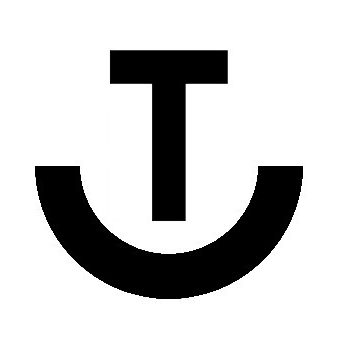There was a moment against Brentford in the first half of Everton’s disappointing 0-0 draw at the weekend that spoke volumes. After a promising period of possession Everton were camped outside the Brentford box, faced by two banks of defenders.
Idrissa Gana Gueye had the ball and looked up for a pass. Then he just stopped. Ahead of him the nine other outfield players were stood still. All completely static staring at Gueye as he they too stopped. A few seconds passed. Gueye laid it off to a teammate. Within a few more seconds a misplaced pass had launched a Brentford counter attack.
Off the ball Everton players are well drilled. The forwards press well and full backs and wingers rotate to ensure space on the wings is shut down. The midfield is often compact, ready to block the path to goal.
What this tells us is that Everton players can be disciplined when told what to do and where to go. It also tells us nobody at the club is telling Everton’s players what to do when they have to actually attack.
The excellent The Byline Podcast on the Blue Room reported that Ian Woan, one of Everton’s assistants, along with an unnamed analyst at the club, believe Everton ‘are best’ when they have around 300 passes each game. If that is the sort of data being passed to the manager then it is clear why Everton have now gone an entire month of the season without scoring a single goal.
There is a wider problem. Sean Dyche and his two assistants Steve Stone and Ian Woan, friends from his Forest days and whose most notable achievements as coaches were the ten years spent at Burnley devising a particular brand of anti-football, are the only real ‘attacking coaches’ at Everton Football Club.
Whether it’s the club’s well-documented financial restraints or Dyche’s preference for a smaller coaching team, Everton are set up like a Championship club – or perhaps more aptly a Premier League club of 20 years ago.
While Kevin Thelwell has revamped the youth and scouting systems the first team coaching setup is shockingly archaic. Everton have just two assistant managers managing the day-to-day training and tactics, plus a goalkeeper coach and two fitness coaches.
A team of four analysts, led by chief analyst Mathew Hawkes, features two video analysts and one match analyst.
It is a tiny team of coaches and analysts compared to Premier League rivals. Nottingham Forest, who were promoted to the Premier League two years ago, have suffered similar PSR issues as Everton and hired manager Nuno Espirito Santo a year after Dyche arrived at Everton, have five assistant managers at the club, along with a goalkeeper coach, four fitness coaches and a team of eight analysts.
Newcastle have three assistants to manager Eddie Howe, two fitness coaches, two additional conditioning coaches and an army of analysts on hand to support tactics and match day performance. They even have two dedicated ‘performance’ managers.
It is not just coaching team size. Everton are one of only a tiny number of clubs to not employ a set piece coach. An article shared by the BBC listed Stone and Woan as Everton’s options in that area. The other notable club to not have a set piece coach is Spurs, who have conceded a huge number of goals from set pieces in the last 12 months.
A fifth of Premier League goals have come from set pieces this season and Everton’s tactic of launching it to the back post has become tired and predictable.
According to the BBC, a set piece coach was the only member of staff Unai Emery kept on when he joined Aston Villa.
It says: “Austin MacPhee was one of the only staff kept on when Unai Emery replaced Steven Gerrard at Aston Villa two years ago.
“MacPhee – who joined Villa from Midtjylland in 2021 – was also Scotland’s set-piece coach but stepped down last month to spend more time with his ill father.
“He has been credited with Villa’s improved set-pieces and last season they became the first team in Europe to score 20 goals from set plays.”
MacPhee originally working with Midtjyland is no coincidence. The data-driven model of their owner can be seen at Brentford too, where Thomas Frank benefits from a specialist opponent analyst, performance analysts and a host of set piece coaches. Brentford’s remarkable ability to score early Premier League goals may be no coincidence.
The overall coaching team at Everton is tiny. It is about the same size as a top half Championship team in terms of numbers and doesn’t boast any specialists to take advantage of the fine margins in football.
All this is to say Everton’s coaches are not necessarily bad, just that they are so similar. Stone and Woan are well respected and there are popular members of staff in the fitness team too. But it is a small team. It is also worryingly insular. Both played with Dyche 25 years ago, and both have worked with him for a decade at a club that was punching above its weight by playing negative, direct football. Dyche, Woan and Stone are the main driving force behind tactics and style based on what they know and there are no dissenting voices.
That insular thinking inevitably leads to an echo chamber where opinions converge on a single ‘proper’ way to do things. In Everton’s case the former Burnley management team have decided giving up possession, being passive in attack and hoping to snatch a 1-0 is the ‘best’ way to play as Everton Football Club. Far from being used to challenge and improve the situation, the data team has provided stats to support the theory.
Notably Sean Dyche has spoken about how strikers cannot be trained, only bought. A defender himself in his playing days, he has only two midfielders available to him to share knowledge of how to improve strikers at the club. Duncan Ferguson’s impact on Dominic Calvert-Lewin is one good example of a striker having a positive effect on a striker, although it comes with the caveat James, Richarlison and Doucoure were tasked with supplying Calvert-Lewin at all times under Carlo Ancelotti.
Dyche also suggested he had no evidence Iliman Ndiaye could play number 10. This was days after he had starred or Senegal in exactly that position, while his best performances for Sheffield United in the Championship were in a central role. A top analyst team would either be able to provide the data and clips necessary to push back against that narrative – but at Everton either the ability is not there or the motivation to correct the manager’s inner circle is missing.
Much has been made of Dyche’s stubbornness. Of his inability to set up an attack and of Everton’s archaic, anti-football. But through choice or finances he’s not being helped by a small coaching team that has seemed to run out of ideas.
When Dyche inevitably leaves the club Kevin Thelwell’s revamp needs to stretch to the first team. The club needs a proper coaching structure with modern roles across the first team set up. From coaching to development to fitness, Everton need to start thinking and acting like a Premier League club, or risk losing that status completely.

